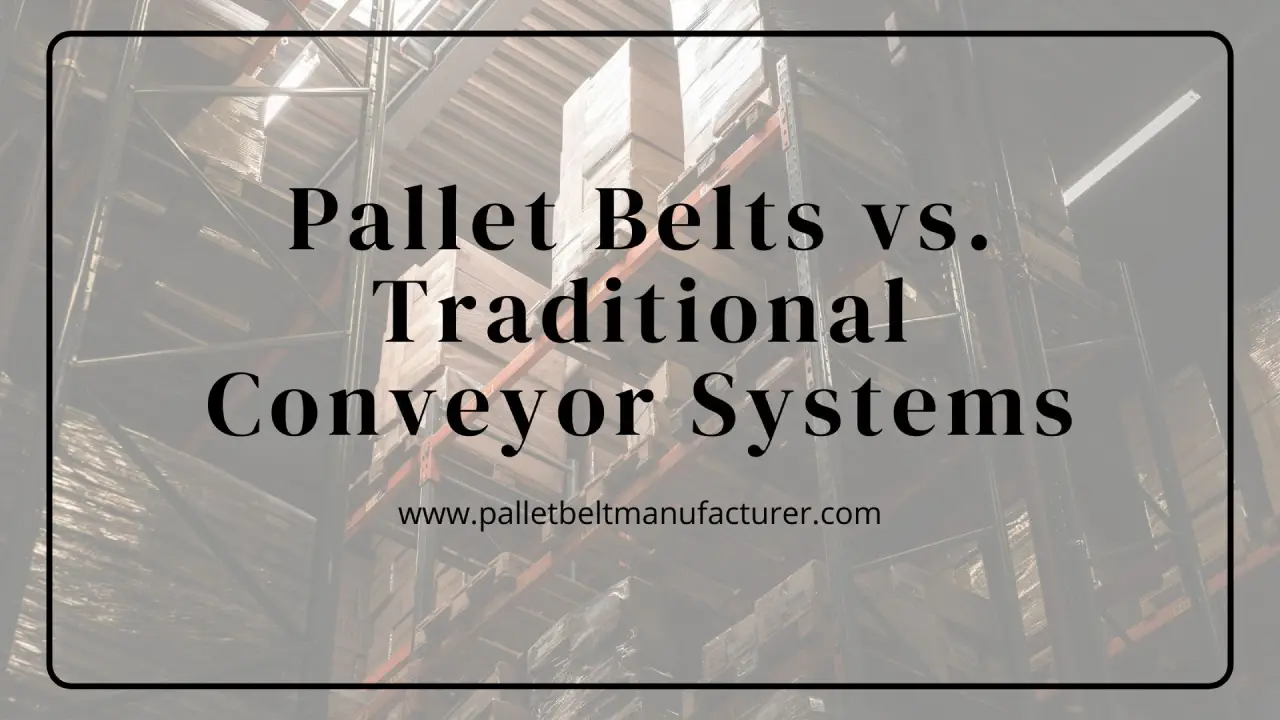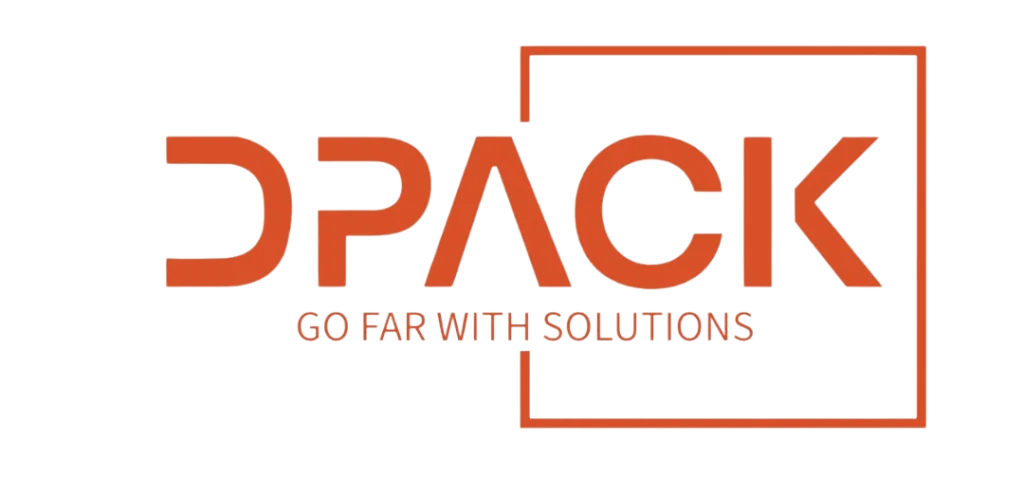
Pallet Belts vs. Traditional Conveyor Systems
Introduction
In today’s fast-paced industrial world, material handling systems are no longer just a support function—they are the backbone of manufacturing, warehousing, logistics, and distribution networks. Businesses compete on efficiency, precision, and cost savings, and the way goods move across a facility plays a critical role in these factors.
For decades, traditional conveyor systems—roller conveyors, chain conveyors, and flat belt conveyors—dominated factory floors. They provided a reliable way to move items, replacing labor-intensive manual handling. But as industries evolved, so did their requirements. Speed, safety, automation integration, and handling of heavy or fragile goods demanded more advanced solutions.
This is where pallet belts emerged as a game-changer. Designed to handle uniform pallets with smooth precision, they combine heavy-duty strength with modular flexibility. More and more industries—from automotive giants to e-commerce warehouses—are shifting from traditional conveyor systems to pallet belts because they want efficiency with durability.
As a leading Pallet Belt Manufacturer, D Pack has observed this shift closely. Many of our clients initially invested in traditional conveyors but later realized their limitations. When they switched to pallet belts, they experienced improved safety, reduced downtime, better space utilization, and a significant return on investment.
This comprehensive guide compares pallet belts vs. traditional conveyors in detail, covering everything from design to cost economics. If you are planning to upgrade your facility, this blog will help you make an informed choice.
1. Design and Structure
Pallet Belts
A pallet belt is a modular conveyor system designed to move uniform pallets or load carriers. Its construction uses strong yet flexible belt materials supported by precision-engineered drives. The design ensures that pallets remain stable while moving—critical in industries where goods are fragile or need synchronized flow.
The modularity of pallet belts allows them to adapt to different floor layouts. They can include curves, inclines, and declines without disrupting stability. This makes them particularly suited for facilities that lack large open spaces.
For example, in a modern e-commerce warehouse, goods flow continuously from storage zones to packing lines. With pallet belts, the facility can introduce sharp curves and vertical lifts, ensuring a seamless process even when the layout is compact.
Traditional Conveyors
Traditional conveyors come in several forms—roller conveyors (using cylindrical rollers to move goods), chain conveyors (for heavy-duty loads), and flat belt conveyors (for general goods movement). While they are versatile, they are limited in handling irregular-shaped goods.
Roller conveyors, for instance, often face jamming issues when boxes are slightly dented or misaligned. Chain conveyors are noisy and require frequent lubrication. Flat belt conveyors are prone to wear and slippage.
Comparison Verdict: Pallet belts excel in precision and adaptability, while traditional conveyors offer broader load-type handling but with higher limitations.
2. Load Capacity
Pallet Belts
Pallet belts are engineered for heavy-duty load handling. They are designed to move pallets weighing from a few hundred kilograms up to multiple tons, depending on the configuration. This makes them ideal for industries like automotive, steel, cement, and FMCG.
One of our clients—a major automotive manufacturer—shifted from roller conveyors to pallet belts because the old system struggled with heavy engine blocks. With pallet belts, the company could move heavy loads smoothly without vibration, reducing product damage.
Traditional Conveyors
Traditional conveyors handle light to medium-weight products well. Roller conveyors are perfect for cartons, small boxes, and packaged goods. However, they face limitations with consistently heavy loads unless reinforced, which increases costs.
Comparison Verdict: For heavy-duty applications, pallet belts are the clear winner.
3. Space Efficiency
Pallet Belts
Modern factories are not always blessed with vast open spaces. Pallet belts are built with modular flexibility, meaning they can be installed in tight spaces, curved layouts, or vertical structures. Their ability to work on multiple planes makes them a favorite in industries like pharmaceuticals and cold storage.
Imagine a cold storage facility where every inch of space must be optimized for temperature control. A pallet belt can navigate through compact aisles, minimizing unused space while maximizing storage.
Traditional Conveyors
Traditional conveyors require linear space. They struggle with curves and vertical movement, making them less effective in warehouses with complex layouts.
Comparison Verdict: Pallet belts optimize space usage far better than conveyors.
4. Maintenance and Downtime
Pallet Belts
One of the greatest advantages of pallet belts is low maintenance. Being modular, if one section wears out, it can be replaced individually without halting the entire system. Pallet belts also use durable materials that resist wear and reduce lubrication needs.
For example, a food processing unit using pallet belts reported 40% less downtime compared to their earlier roller conveyors, saving both time and money.
Traditional Conveyors
Conveyors often demand frequent maintenance. Rollers need realignment, chains require lubrication, and belts wear out quickly under heavy loads. These frequent breakdowns translate into lost productivity and higher costs.
Comparison Verdict: Pallet belts reduce downtime with their minimal maintenance needs.
5. Speed and Efficiency
Pallet Belts
Pallet belts are designed for controlled, precise movement. This is particularly valuable in industries like pharmaceuticals, where medicines must be transported at a steady pace without vibration. Automation systems can easily integrate with pallet belts to control speed and synchronize processes.
Traditional Conveyors
Conveyors are faster when moving large volumes but often lack precision. Sudden stops or uneven flow may cause fragile goods to shift or break.
Comparison Verdict: For speed with precision, pallet belts take the lead.
6. Durability and Lifespan
Pallet Belts
High-quality pallet belts from a trusted Pallet Belt Manufacturer like D Pack are made with industrial-grade polymers, reinforced steel, and advanced drive systems. This makes them resistant to wear, ensuring a longer operational lifespan.
Traditional Conveyors
While durable in their own right, traditional conveyors—especially chain and roller types—wear down faster under heavy loads. Over 5–10 years, their replacement cost often outweighs their initial savings.
Comparison Verdict: Pallet belts last longer, providing better ROI over time.
7. Safety Standards
Pallet Belts
Safety is paramount in any workplace. Pallet belts are designed for smooth, controlled transport, which minimizes risks of accidents, falling goods, or operator injuries. Their enclosed drive systems also reduce the risk of entanglement.
Traditional Conveyors
Traditional conveyors, especially chain conveyors, present safety hazards. Workers must be cautious around exposed rollers and chains, which can cause serious injuries.
Comparison Verdict: Pallet belts provide higher workplace safety compliance.
8. Flexibility and Scalability
Pallet Belts
Pallet belts are future-proof. Their modularity allows facilities to expand, reconfigure, or relocate systems without heavy investment.
For example, an FMCG client expanded its plant capacity by 50%. With pallet belts, we extended the system in just a few days, avoiding major downtime.
Traditional Conveyors
Reconfiguring conveyor systems is time-consuming and expensive, often requiring complete redesign and downtime.
Comparison Verdict: Pallet belts are ideal for scaling businesses.
9. Cost Economics
Pallet Belts
Yes, pallet belts have a higher upfront cost. But over time, their lower maintenance, longer lifespan, and improved safety translate into substantial savings. Many companies recover their investment within 3–5 years.
Traditional Conveyors
Traditional conveyors are cheaper to install but costlier to maintain. Frequent repairs, downtime, and accidents add hidden costs that often surpass pallet belt expenses in the long run.
Comparison Verdict: Pallet belts win in total cost of ownership.
10. Applications Across Industries
- Pallet Belts: Automotive, pharmaceuticals, FMCG, cold storage, e-commerce, steel, and heavy manufacturing.
- Traditional Conveyors: Food processing, airports, basic packaging lines, small-scale warehouses.
Comparison Verdict: Pallet belts are the future of modern automated industries.
Future Trends
Pallet belts are evolving with IoT integration, AI monitoring, predictive maintenance, and energy-efficient designs. As industries adopt automation, the demand for pallet belts will only grow. Traditional conveyors will remain relevant in smaller, low-tech environments, but pallet belts will dominate high-performance industries.
Conclusion
Both pallet belts and traditional conveyors play vital roles in material handling. But as industries demand automation, safety, and efficiency, pallet belts are emerging as the superior choice.
At D Pack, we are committed to delivering innovative, durable, and customizable solutions as a trusted Pallet Belt Manufacturer. Whether you’re upgrading your facility or setting up a new plant, pallet belts can transform your efficiency, safety, and long-term profitability.


